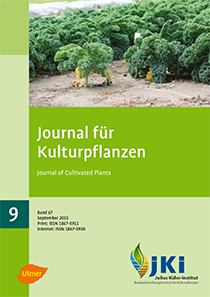Human pathogenic bacteria on plants
Keywords:
EHEC, Salmonella, Survival, Dissemination and entry paths, Environmental factors, Detection methodsAbstract
Fruits and vegetables are beneficial for human health. A major contribution to this comes from the microorganisms associated with them. However, fruits and vegetables may cause food poisoning, when contaminated with human pathogens and eaten raw. In our review, based on a literature survey, we show insights into the entry of Escherichia coli or Salmonella enterica into the fruit and vegetable environment via diverse routes and the complex interactions between various biotic and abiotic factors, which influence the survival of human pathogens in soil and on plants. In particular, mobile genetic elements acquired through horizontal gene transfer contribute to the diversity of pathogenic strains and to their adaptation to extra-intestinal habitats. For a successful establishment of human pathogens on plants, the attachment, internalization and the response of the plant are important. Mainly the genetic equipment of the human pathogen, the plant, and its microbiome determine the complex interaction between human pathogens and plants. However, also a multitude of environmental factors plays an important role. The availability of nutrients, for example, is fundamental for the survival of human pathogens and they have to compete for them with the indigenous plant and soil microorganisms. Recommendations for the practice require an improved understanding of the ecology of human pathogens in soil and on plants but also along the production chain. The development and use of sensitive and specific detection tools is essential and needs to consider the diversification of human pathogens through horizontal gene transfer as well as the problem of their non-cultivability under environmental stress conditions.
DOI: 10.5073/JfK.2015.09.01, https://doi.org/10.5073/JfK.2015.09.01
Downloads
Published
Issue
Section
License
The content of the journal is licensed under the Creative Commons Attribution 4.0 License. Any user is free to share and adapt (remix, transform, build upon) the content as long as the original publication is attributed (authors, title, year, journal, issue, pages).
The copyright of the published work remains with the authors. The authors grant the Journal of Cultivated Plants, the Julius Kühn-Institut and the OpenAgrar repository the non-exclusive right to distribute and exploit the work.







